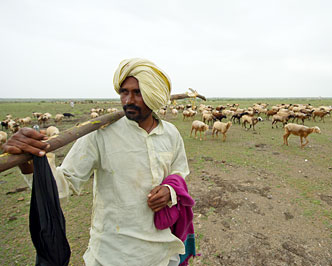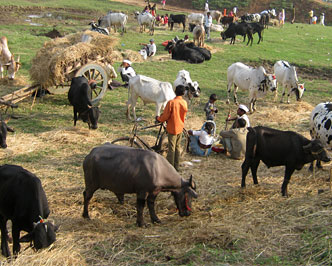-
- March 8, 2018
Walk with the Ducks
Tucked away amidst India’s rice fields are a species of birds which provide value and service to the fields and farmers but remain hidden from view . On a project supported by Anthra, Ruchita spent a few months meeting duck farmers in Tamil Nadu to find out more about duck rearing . This is what she found
Ducks , a domesticated species form about 10% of the total poultry population and contribute about 6-7% of total eggs produced in the country. Concentrated in the Eastern and Southern states of the country, the leading states rearing ducks are West Bengal, Assam, Kerala, Andhra Pradesh, Tamil Nadu, Uttar Pradesh, Bihar and Odisha.
While several thousand farmers practice duck rearing there is little documentation on how it is practiced. Farmers in India in general follow three systems ; free range , confined and indoor . Ducks can also be reared integrated with fish farming or with paddy cultivation. Under the free range system ducks principally graze on harvested paddy fields, In fact they migrate from field to field offering a service to the paddy farmer
In Tamil Nadu 70 percent of the duck population is concentrated in six districts namely, Kanchepuram, Thiruvallur, Villupuram, Cuddalore, Vellore and Tiruvennamalai. Chengalpattu and Kanchepuram district alone have 39 percent of the total population because of wide spread paddy farming and a number of water bodies.
Duck rearing is mainly practiced by communities who do not own land. Ducks graze on post harvested paddy fields and also feed in water bodies like ponds, lakes, reservoirs, canals and water channels of the rivers. They eat fallen paddy grains in the fields, snails, earth worms, insects, small fishes, fingerlings, tadpoles and water plants like algae etc.
It is said that that a half acre plot of paddy post harvest can feed a 100 ducks comfortably. In return the droppings from the ducks fertilise the field . The trampling of the field by ducks also reduces weed growth .
In some villages the duck rearers lease land for grazing their animals from village panchayats . The money then goes towards the village development fund
Migrating ducks .
Ducks from Tamil Nadu migrate as far as Mangalore and Bellary in Karnataka , Cuddapah in Andhra Pradesh and Ernakumlam in Cochin . Ducks can walk a maximum of a kilometer a day so where large distances have to be traversed a vehicle is hired
The duck rearers often migrate with their families . Only school going children stay back in their native home with grandparents or relatives .
Sitting Ducks
Ducks in India lay 140 -160 eggs per year . Duck meat is relished in West Bengal and Kerala as are duck eggs .
The duck breeds of India are Sylehet and Nageshwari of the Eastern and North Eastern states and Kuttanad and Aarani in Kerala and Tamil Nadu . While some duck breeds need a lot of water some can survive on relatively less water .
Ducks graze for almost 12 hours a day, generally from 6 am in the morning until 6-7 pm, after which they are housed in a temporary enclosure built using sticks and cloth such as an old sari or a tarpaulin sheet These enclosures are built next to temporary shelters, where the duck rearers stay with their family. These temporary shelters are usually erected near paddy fields or ponds, where ducks are grazed. Ducks lay eggs during the night time and until sunrise so after egg collection, duck rearers leave for the paddy fields for grazing them.
Some of the common problems faced by the duck rearers are ;
Continuous migration in search of fresh and safe grazing areas
Poor veterinary support
Predation and theft
Lack of recognition and support by the government and policy makers (loans, insurance) from the government
Harassment while on migration






